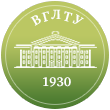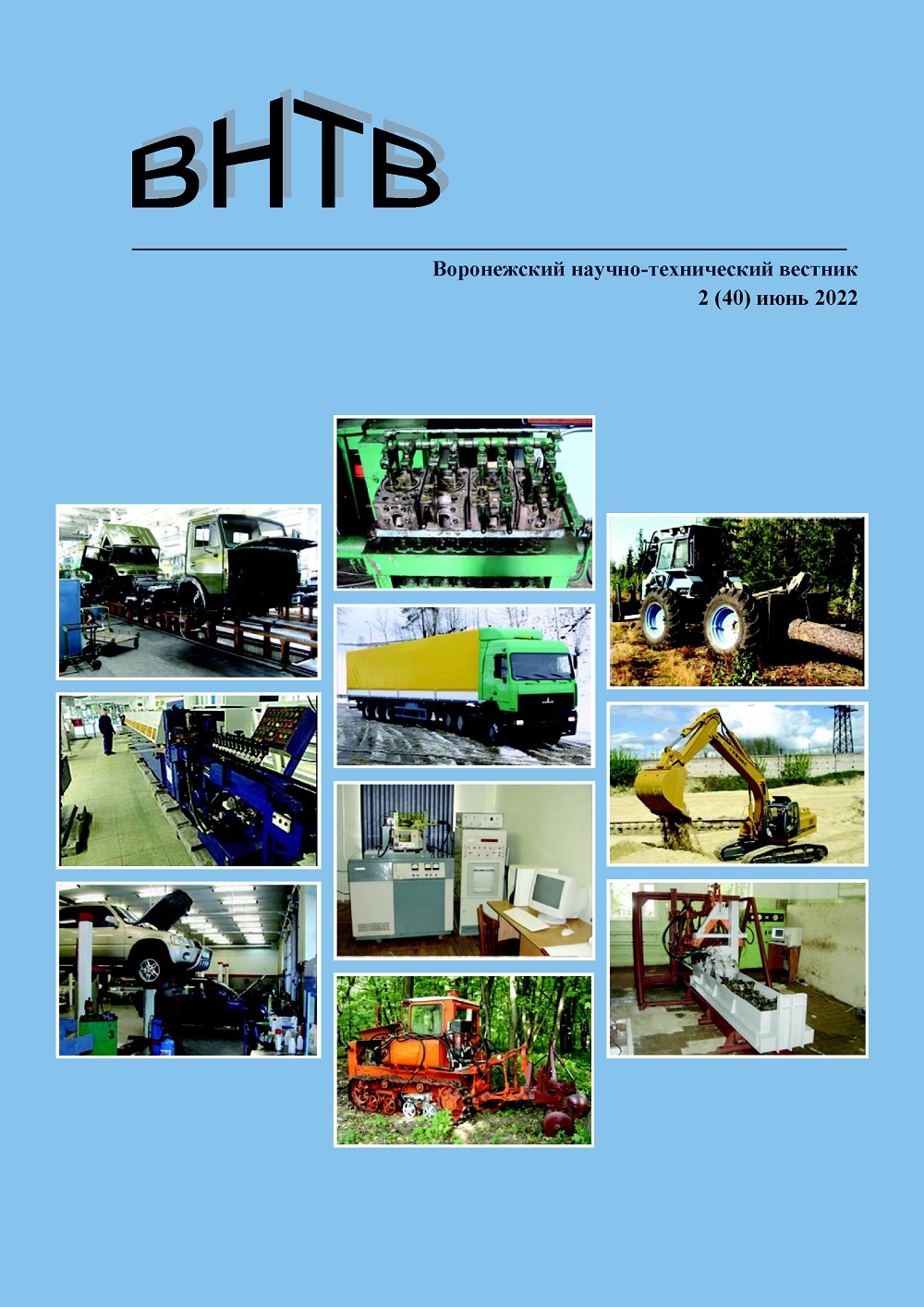UDC 656.05
Coordinated management is one of the ways to improve the efficiency of main streets, using a coordinated management mode, it is possible to reduce the occurrence of major adverse situa-tions on the managed section of the road net-work - long downtime, unintended delays, and even accidents. But in the conditions of modern cities, situations often arise when the intensity in the connecting sections is quite high and exceeds the intensity in the coordinated section, in this case, the effectiveness of management must be assessed. In this regard, the main goal of the study is to evaluate the efficiency of the coordinated section, taking into account the variation in intensity indicators, both in the main section (main street) and in connected sections.
COORDINATED MANAGEMENT, MAIN STREET, CONNECTED AREAS, EFFICIENCY, TRAFFIC INTENSITY.
1 Состояние вопроса исследования и актуальность работы
Организация дорожного движения, это один из основных видов мероприятий, способствующий минимизации негативного влияния транспорта, а также снижению дорожно-транспортных происшествий [1-4]. Одним из основных видов организации дорожного движения, является управление, которое в основном реализуется с использованием технических средств организации дорожного движения, как динамических – постоянно изменяющих свое значение, символ или сигнал, так и стационарных [5-8]. Для управления движением на магистральных улицах – в состав которых входит несколько перекрестков, связанных между собой единым или кратным циклом регулирования. Существует определенное количество исследований, посвященных вопросу эффективности работы координируемых участков [9-11], а также оценке основных характеристик транспортного потока [12].
Следует отметить, что сегодня в современных городах сложились довольно сложные условия для движения, которые связаны в первую очередь с увеличением количества транспортных средств, данное явление в совокупности с применением неэффективных методов управления оказывает негативное влияние как на экологические показатели, связанных с перегазованностью и повышенным расходом топлива [13-15], так и на экономические показатели, связанные с ущербом от возникновения ДТП [16,17]. В случае координированного управления, необходимо оценить эффективность его применения с учетом времени проезда, как на основном участке, так и на связных участках. В связи с этим, в рамках статьи выполнен модельный эксперимент по оценке эффективности применения координированного управления на одной из магистральных улиц г. Воронеж – Ленинский проспект.
2 Материалы и методы
Наиболее нагруженным участком, управление на котором координированно, является Ленинский проспект (рис. 1).

 |
Рисунок 1 – Схематичное изображение исследуемого координируемого
участка – Ленинский проспект
Протяженность координируемого участка 840 м, в координации находятся 3 перекрестка – Ленинский пр. – ул. Циолковского (перекресток № 1), Ленинский пр. – ул. Полины Осипенко (перекресток № 2), Ленинский пр. – Ольховый пер. (перекресток № 3). Протяженность между перекрестком № 1 и перекрестком № 2 составляет 460 м, между перекрестком № 2 и перекрестком № 3 – 380 м, рассмотрим более подробно каждый перекресток.
В результате выполненного натурного обследования перекрестка № 1, с применением метода краткосрочного анализа [18, 19], были определены значения интенсивностей по основным въездным направлениям (рис. 2). Суммарное значение интенсивности на перекрестке № 1 составляет 13404 ед./ч, среднее значение по направлениям составляет около 838 ед./ч, по Ленинскому проспекту суммарное значение интенсивности – 10700 ед./ч, по ул. Циолковского – 2704 ед./ч. Следует отметить, что транспортный поток составляют легковые автомобили, которых в среднем около 80 %, но довольно часто в потоке встречаются грузовые автомобили и автобусы. Исследования перекрестка № 1 показали высокую транзитность Ленинского проспекта – 80 %.

Рисунок 2 – Гистограмма интенсивности движения по исследованным
направлениям движения на перекрестке № 1
Натурное исследование интенсивности дорожного движения на перекрестке № 2 показали, что суммарный транспортный поток составляет 11498 ед./ч, в среднем по каждому направлению движутся 958 ед./ч. Суммарная интенсивность движения по ул. Полины Осипенко составляет 608 ед./ч, по Ленинскому проспекту – 10890 ед./ч (рис. 3).
1. Kravchenko, P. A. Organization and safety of road traffic in large cities / P. A. Kravchenko // Science and technology in the road industry. - 2013. - No. 1 (64).
2. Kapsky, D.V. Organization of traffic / D.V. Kapsky // Far East: problems of development of the architectural and construction complex. - 2013. - No. 1. - P. 436-440.
3. Kushnareva, I. V. Organization of traffic in a modern city / I. V. Kushnareva, S. A. Kryukov // Actual directions of scientific research of the XXI century: theory and practice. - 2016. - V. 4. - No. 5-3 (25-3). - S. 273-278.
4. Dobromirov, V. N. Organization of safe road traffic at pedestrian crossings / V. N. Dobromirov, S. S. Evtyukov, E. V. Golov // Vestnik grazhdanskikh inzhenerov. - 2017. - No. 6(65). - S. 265-270. - DOIhttps://doi.org/10.23968/1999-5571-2017-14-6-265-270.
5. Shevtsova, A. G. Review of various types of traffic organization at the intersection / A. G. Shevtsova, L. E. Kushchenko, V. M. Zakharov // Bulletin of the Tula State University. Technical science. - 2015. - No. 6-1. - S. 39-44.
6. Shevtsova, A. G. Modern approach to managing a traffic light object / A. G. Shevtsova, I. A. Novikov, A. E. Borovskoy // Information technologies and innovations in transport: materials of the 2nd International scientific and practical conference , Orel, May 17-18, 2016 / Under the general editorship of A. N. Novikov. - Eagle: Oryol State University. I. S. Turgeneva, 2016. - S. 366-370.
7. Shevtsova, A. G. Review of new technical means of traffic organization / A. G. Shevtsova, Yu. A. Mochalina // Alternative energy sources in the transport and technological complex: problems and prospects for rational use. - 2015. - T. 2. - No. 2 (3). - S. 672-677. - DOIhttps://doi.org/10.12737/19521.
8. Solution of the problem of traffic regulation based on an automated control system / V. E. Medvedev, A. V. Solomatin, O. O. Varlamov [et al.] // In the world of scientific discoveries. - 2012. - No. 2-6 (26). - S. 124-129.
9. Kadasev, D. A. Coordinated traffic light control of traffic flows on the G. Lipetsk highway / D. A. Kadasev, D. V. Polotsky // Alternative energy sources in the transport and technological complex: problems and prospects for rational use. - 2016. - T. 3. - No. 1(4). - S. 413-416. - DOIhttps://doi.org/10.12737/17821.
10. Kadasev, D. A. Introduction of coordinated management of traffic flows on the street. Sviridova G. Lipetsk / D. A. Kadasev, I. Yu. Nemtseva // Engineering in construction and transport. Trends in the development of modern science: Proceedings of the I All-Russian Scientific and Practical Conference of Young Scientists, Lipetsk, June 06-07, 2019. - Lipetsk: Lipetsk State Technical University, 2020. - P. 79-81.
11. Galyuzin, A. I., Shevtsova, A. G., Borovskoy, A. E. Coordinated management of the urban transport highway // Youth and transport. Present and Future: Proceedings of the III International Youth Conference, Oryol, April 30, 2020. - Orel: Oryol State University named after I. S. Turgenev, 2021. - P. 5-9.
12. Pilgeikina, I. A. Influence of the coordination effect on the delay of vehicles / I. A. Pilgeikina // World of Transport and Technological Machines. - 2020. - No. 1 (68). - S. 59-64. - DOIhttps://doi.org/10.33979/2073-7432-2020-68-1-59-64.
13. Information technologies and management of transport systems development of the approach to assessing adaptation of the intersection transport model / A. Novikov, S. Glagolev, I. Novikov, A. Shevtsova // IOP Conference Series: Materials Science and Engineering : 2019 International Conference on Innovations in Automotive and Aerospace Engineering, ICI2AE 2019, Irkutsk, May 27 - 01, 2019. - Irkutsk: Institute of Physics Publishing, 2019. - P. 012052. - DOIhttps://doi.org/10.1088/1757-899X/632/1/012052.
14. Korchagin, V. A. Analysis of environmental safety when changing the control regime at the crossroads / V. A. Korchagin, I. A. Novikov, A. G. Shevtsova // Science-intensive technologies and innovations: collection of reports of the International Scientific and Practical Conference, Belgorod, October 06-07, 2016 / Belgorod State Technological University. V. G. Shukhov. - Belgorod: Belgorod State Technological University named after V.I. V. G. Shukhova, 2016. - S. 99-103.
15. Vasilyeva, V. V. Ecological aspect of the use of intelligent transport systems / V. V. Vasilyeva // Actual issues of innovative development of the transport complex: Proceedings of the 3rd International Scientific and Practical Conference, Orel, May 21-23, 2013 / under the general edited by A. N. Novikov. - Eagle: State University-UNPK, 2013. - S. 272-273.
16. Glagolev, S. N., Shevtsova, A. G., Vasilyeva, V. V. Reducing the environmental load of the urban area by minimizing the impact of freight transport // World of Transport and Technological Machines. - 2020. - No. 3 (70). - S. 97-106. - DOIhttps://doi.org/10.33979/2073-7432-2020-70-3-97-106.
17. Novikov I. A., Kravchenko A. A., Shevtsova A. G., Vasilyeva V. V. Scientific and methodological approach to reducing accidents on the roads of the Russian Federation // World of Transport and Technological Machines. - 2019. - No. 3 (66). - S. 58-64.
18. Shevtsova, A. G. Review of existing methods for studying traffic intensity / A. G. Shevtsova, M. V. Medvedeva // International Scientific and Technical Conference of Young Scientists of BSTU. V. G. Shukhov, dedicated to the 160th anniversary of the birth of V. G. Shukhov, Belgorod, May 01-20, 2013. - Belgorod: Shukhova, 2013. - S. 1307-1312.
19. Borovskoy, A. E., Medvedev, M. I., Shevtsova, A. G. Analysis of models for calculating the intensity of traffic in the zone of controlled intersections. - 2016. - No. 4 (55). - S. 55-62.
20. Chuvikov, D. A. Models and algorithms for reconstruction and examination of emergency events of road traffic accidents based on logical artificial intelligence / D. A. Chuvikov. - Moscow: Limited Liability Company "Scientific Publishing Center INFRA-M", 2020. - 305 p. - ISBN 978-5-16-016711-4. - DOIhttps://doi.org/10.12737/1220729.
21. Shamlitsky, Ya. I. Simulation of traffic flows in the AnyLogic environment / Ya. I. Shamlitsky, A. S. Okhota, S. N. Mironenko // Software products and systems. - 2018. - No. 3. - P. 632-635.
22. Fatkhutdinov, A.F. Application of simulation modeling for traffic optimization / A.F. Fatkhutdinov // Bulletin of modern research. - 2018. - No. 12.15(27). - S. 265-271.
23. Galkin, A. Graph-structural Modeling in Traffic Flow Control Task / A. Galkin, E. Khabibullina // Proceedings - 2020 2nd International Conference on Control Systems, Mathematical Modeling, Automation and Energy Efficiency, SUMMA 2020 : 2, Virtual, Lipetsk, November 10-13, 2020. - Virtual, Lipetsk, 2020. - P. 807-811. - DOIhttps://doi.org/10.1109/SUMMA50634.2020.9280825.
24. Lyapin, S. A., Kadasev D. A., Voronin N. V. Application of information technologies to assess the impact of traffic intensity on the highway travel time // Information technologies in modeling and management: approaches , methods, solutions: IV All-Russian scientific conference with international participation: collection of materials, Tolyatti, April 20-22, 2021. - Togliatti: Togliatti State University, 2021. - P. 271-277.










